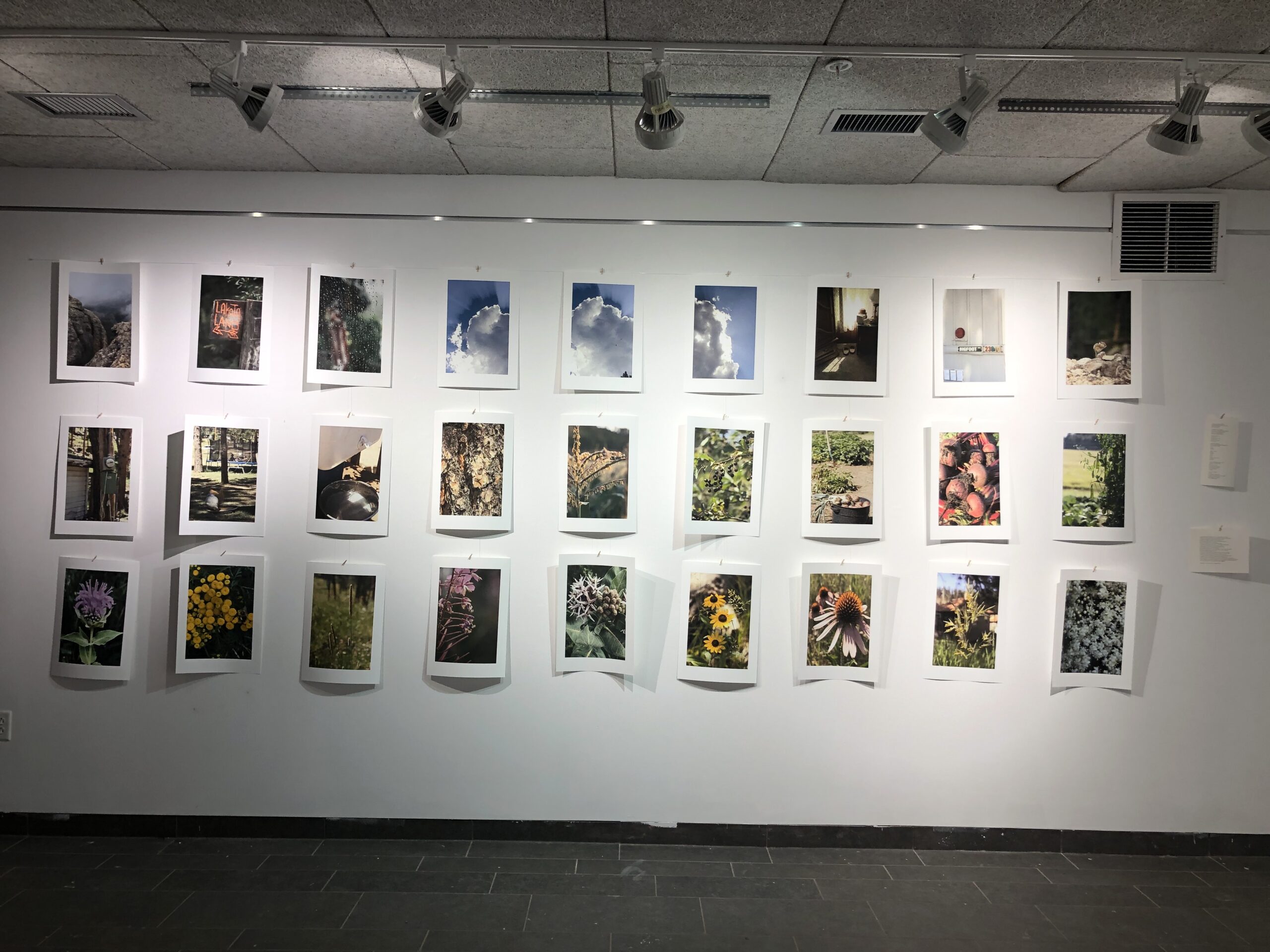McKee Photography Grant recipients present their work at photography exhibition opening
October 14, 2022
 Courtesy of Keaghan Duffy
Courtesy of Keaghan DuffyMcKee Grant recipients presented their work during the annual showcase at the Edwards Center for the Arts on Wednesday night. The $1,000 grant funds travel over the summer for recipients as they compile a collection of photographs on a chosen topic.
Collection topics this year ranged from indigenous land to nature in Maine.
Grant recipient Brandon Lozano-Garay ’24 decided to focus his project on Monhegan Island, located just off the coast of Maine. After researching the island for his internship with the Bowdoin College Museum of Art last summer, Lozano-Garay was drawn to the island for its rough and rocky coastline.
“Part of why I chose to focus on Monhegan Island was to be a part of the collection of hundreds of artists over hundreds of years who also focused on Monhegan Island,” Lozano-Garay said. “I fell victim to the common trope that you get to Monhegan Island and fall in love with it.”
Lozano-Garay, who typically focuses on people in his photographs, decided to only take landscape photos for his project. He tried to incorporate his previous people-based photographic techniques in the way he approached capturing the landscape.
“I typically take photos of people, so I took pictures of the landscape the same way I would normally take a picture of a person,” Lozano-Garay said. “I imagined the face and the contours that lay on someone’s body when looking at the island. There’s something alive about the island and my pictures.”
Initially, Lozano-Garay started capturing only black and white photos, but he eventually moved to color as he continued to visit the island.
“They looked fantastic. Taking color shots instead of black and white brought more liveliness to the island,” he said.
Growing up, Lozano-Garay always gravitated towards the camera because of the abstract nature of photographs. The grant provided him with the ability to explore this facet of his photography.
“Photography is all a lie, and it’s a matter of who can tell the best lie,” he said. “I know it sounds cruel and awful, but there’s something very satisfying about taking a picture and then turning it into something beyond what the human eye can ever imagine on its own.”
After working on the project for five months, he felt anxious to see his work on display.
“I’ve reached a point at Bowdoin and in my career where it’s expected that you do things like this,” Lozano-Garay said. “It’s nice to finally be at the level where I’m showing other people what I’ve been doing.”
Similarly to Lozano-Garay, grant recipient Keaghan Duffy ’23 decided to focus her project on the indigenous lands of the Lakota tribe in the Black Hills. She was told that her great-grandfather, Bud, was Lakota, and she wanted to investigate his story more through the grant.
“[Bud] was presumably my one link to the indigenous people of this region,” she said.
Duffy initially wanted to take portraits of her grandmother and her five children, but it became clear to her that they did not want to be photographed. This change, however, did not deter Duffy.
“Having a camera in my hand and trying to build deeper, meaningful relationships with my family was interesting territory to navigate,” Duffy said. “I didn’t end up taking many personal portraits, but I did think about how my interest acted as a nexus between indigeneity and my family.”
Although she shifted to landscape photography, Duffy was still able to build relationships with her family through her project.
“I spend a lot of time in my grandpa’s garden because it’s the land that connects us,” she said. “You’ll find that there’s a lot of land-based photography. I want to start a meaningful conversation about how we relate to each other through land.”
After four years of photography, the grant allowed Duffy to present her work as a photographer to her family for the first time.
“It definitely feels like a first step to give myself the credit of being a photographer,” she said. “This also feels like work that you really can’t fit within a timeline. The intent was never to finish the work because it was always a start for me.”
Lozano-Garay and Duffy’s efforts did not go unnoticed.
Sophia Wei ’23, an exhibition attendee, thought it was powerful to see the grant recipients explore topics they are interested in through photography.
“I loved the incorporation of the theoretical aspect of the body in Brandon’s presentation,” Wei said. “I think it’s so powerful when you only have a second to capture what’s around you. It’s special to be able to capture an instant moment in your point of view.”

Comments
Before submitting a comment, please review our comment policy. Some key points from the policy: